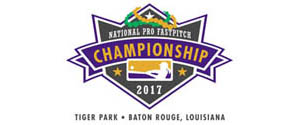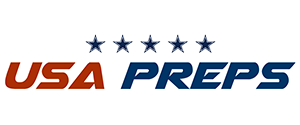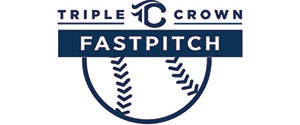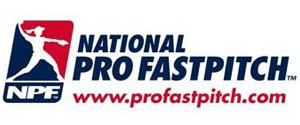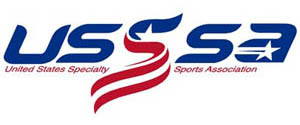Tcannizzo,
I think you would agree that the runner choosing to take the path leading to the 10% of the base which is "blocked" by the defender would have much less of a chance getting an OBS call than a runner who alters their path, thereby showing the umpire that her path was impeded by the defender, wouldn't you?
The Umpire Corner
Obstruction - back to 3rd
Run your mouth when I'm not around
Its easy to achieve
You cry to weak friends that sympathize
- Pantera, Walk
Its easy to achieve
You cry to weak friends that sympathize
- Pantera, Walk
-

Sam - Premium Member

- Posts: 3174
- Joined: Wed Jan 16, 2008 8:22 am
- Location: Norco, California
It doesnt matter if the runner alters their path or not. If the defender has their foot in front of any portion of the bag without posession of the ball, by rule it is obstruction.
- Comp
- Posts: 589
- Joined: Sun Jun 22, 2008 11:27 am
Comp wrote:It doesnt matter if the runner alters their path or not. If the defender has their foot in front of any portion of the bag without posession of the ball, by rule it is obstruction.
I understand the rule, but the application of the rule is subject to the umpire's judgement regarding whether or not the runner has been impeded. I think that the vast majority of umpires would not call OBS if the runner's path allowed even 2/3 of the base to be reached. Would you call OBS on a play where F2 is receiving a throw from right field on a singe with half of her left foot on the front left corner of home plate and the runner (attempting to score from 2nd base) does a slide by to the back of the plate and misses the plate on the way by? F2 doesn't cause the runner to alter her path because she is 8 feet away from the baseline coming in to home from the angle of the 3B coach's box. Your interpretation says that you would call that OBS. I think that you may be the only one of 100 umpires that would call OBS on that type of play.
Run your mouth when I'm not around
Its easy to achieve
You cry to weak friends that sympathize
- Pantera, Walk
Its easy to achieve
You cry to weak friends that sympathize
- Pantera, Walk
-

Sam - Premium Member

- Posts: 3174
- Joined: Wed Jan 16, 2008 8:22 am
- Location: Norco, California
Sam wrote:Tcannizzo,
I think you would agree that the runner choosing to take the path leading to the 10% of the base which is "blocked" by the defender would have much less of a chance getting an OBS call than a runner who alters their path, thereby showing the umpire that her path was impeded by the defender, wouldn't you?
Not from any half decent umpire.
I don't know why so many people overthink this rule and it's application, including umpires. It is a non-punitive, so what is the big deal?
Want to eliminate umpires from calling the rule, apply a penalty. And then stand by for a load of injuries to defenders who play for coaches which put winning ahead of the players' well-being.
And before you tell me I'm crazy, that is exactly what was happening in HS ball before they eliminated the automatic award for OBS.
- MTR
- Posts: 2317
- Joined: Thu Jan 03, 2008 5:21 am
Sam wrote:Tcannizzo,
I think you would agree that the runner choosing to take the path leading to the 10% of the base which is "blocked" by the defender would have much less of a chance getting an OBS call than a runner who alters their path, thereby showing the umpire that her path was impeded by the defender, wouldn't you?
Can't speak for others, but not in a game where I was PU (for a play at the plate)
R has 100% choice. OBS would be forthcoming from me.
Take it one step fwd from a coaching perspective.
You have an opportunity to "manufacture" an OBS call by going for the part of the base that is potentially blocked; BONUS TIP: In a run-down situation; just teach your runner to run towards the player who just threw the ball.
Tony Cannizzo
Umpire
"May all the close calls go your way"
Umpire
"May all the close calls go your way"
-

tcannizzo - Posts: 383
- Joined: Sun Jan 06, 2008 7:50 am
Comp wrote:ASA rule supplement 36.
"If a defensive player is blocking the base or basepath without the ball, they are impeding the progress of the runner and this is obstruction."
It doesnt matter if the runner alters their path or not. If the defender has their foot in front of any portion of the bag without posession of the ball, by rule it is obstruction.
Comp's definition of OBS, based on R/S 36, is different than previous posts that OBS should only be called if the runner was perceptibly hindered/impeded (e.g. viewtopic.php?f=40&t=13921&p=217465).
tcannizzo wrote:There are others, such as the coach who says an infielder cannot position herself in the basepath. Players may position themselves anywhere they like, as long as they do not hinder/impede the runner. Players block bases and just as the runner is sliding in (or diving back) they get out of the way. Point is that the runner must be impeded in some perceptible way.
Which one is correct?
-

PDad - Premium Member

- Posts: 3439
- Joined: Sun Mar 29, 2009 4:52 pm
PDad wrote:Comp wrote:ASA rule supplement 36.
"If a defensive player is blocking the base or basepath without the ball, they are impeding the progress of the runner and this is obstruction."
It doesnt matter if the runner alters their path or not. If the defender has their foot in front of any portion of the bag without posession of the ball, by rule it is obstruction.
Comp's definition of OBS, based on R/S 36, is different than previous posts that OBS should only be called if the runner was perceptibly hindered/impeded (e.g. viewtopic.php?f=40&t=13921&p=217465).tcannizzo wrote:There are others, such as the coach who says an infielder cannot position herself in the basepath. Players may position themselves anywhere they like, as long as they do not hinder/impede the runner. Players block bases and just as the runner is sliding in (or diving back) they get out of the way. Point is that the runner must be impeded in some perceptible way.
Which one is correct?
To take that one sentence of R/S 36 alone and literally, there would need to be obstruction ruled on every play anytime any defender even crossed a base path while the ball is alive. It is so obviously out of context in that way that you have to consider the meaning and intent of the rule. I believe we have to consider that the meaning of "blocking" in that sentence has to mean blocking such that it is apparent the runner is impeded.
The definition of obstruction requires that a runner be hindered or somehow impeded in their right to run the bases in the manner in which they choose; so long as they do so without committing interference. If a defender takes away an apparent option the runner is entitled to, that is being hindered; forcing a runner to change an apparent path is being hindered. If a defender not in possession of the ball causes the runner to react in any way, that is being hindered.
But, if the runner chooses their path, and isn't hindered in any way by a defender without the ball that may actually be in or in part of the base path, then it isn't (by definition) obstruction.
On a tangent (but with a point, I promise), I am reminded that when I chose to officiate wrestling many years ago, it was a requirement where I joined that you must have wrestled yourself. It was clear to all that the concept of "control" (when you have it, when you lost it, and when your opponent has it) couldn't be fully defined in words. So, those who knew it when they saw it were those who have been there.
To those that know what obstruction is, it is a simple rule; MTR has said so many times, and I fully agree. To those that simply want to wordsmith an agenda, you can argue until the cows come home; and that includes the umpires that call it like they want it, as well as the coaches that are only arguing what helps them at the moment (or on the bigger scale). But, you know (or should know) when a runner is obstructed, because that is when a defender took away (one of) the options a runner still had without being in possession of the ball. The runner no longer has "control"; and when that happens, that means the runner was hindered illegally.
-

UmpSteve - Premium Member

- Posts: 461
- Joined: Fri Aug 21, 2009 10:38 am
Has a runner been hindered if they are still 50' away and the defender has put their foot in front of the bag, or standing in front of the bag? No, and I would not call that until such time as the runner was actually affected. But, in the examples I used of arguments I got at an ASA national tournament, F3 placing their foot in front of the base, or stradling the base on a pick off attempt certainly is obstructing the runner from coming back to the base. My third example was a no brainer. F6 without the ball standing in the basepath and gets run into by the runner rounding the bag is obstruction all day long.
- Comp
- Posts: 589
- Joined: Sun Jun 22, 2008 11:27 am
Another tangent.
One of the "newest" forms of obstruction is F3 (first baseman) staying near the bag before a pitch to keep the runner (they think) from getting a good jump on the pitch. The F3 steps up just as the pitcher releases, but it creates a "discomfort" for the runner.
Guess what? Hindered, yes; even before she can legally run, you cannot hinder her in her space, in a way that still lingers as a hindrence when she can run. In my game, no stealing (or picked off) runner will ever be out when F3 does that.
Old hat, really, they think it is new. NCAA even includes obstruction if F3 keeps the runner from seeing the pitcher to time her release. All the runner (or coach) need to do is bring it to the umpire's attention to get some action.
One of the "newest" forms of obstruction is F3 (first baseman) staying near the bag before a pitch to keep the runner (they think) from getting a good jump on the pitch. The F3 steps up just as the pitcher releases, but it creates a "discomfort" for the runner.
Guess what? Hindered, yes; even before she can legally run, you cannot hinder her in her space, in a way that still lingers as a hindrence when she can run. In my game, no stealing (or picked off) runner will ever be out when F3 does that.
Old hat, really, they think it is new. NCAA even includes obstruction if F3 keeps the runner from seeing the pitcher to time her release. All the runner (or coach) need to do is bring it to the umpire's attention to get some action.
-

UmpSteve - Premium Member

- Posts: 461
- Joined: Fri Aug 21, 2009 10:38 am
MTR wrote:Comp wrote:Its usually the coaches claiming the runner had easy access to the base through the legs of their defenender you just called obstruction on. Just finished 16/18B ASA western nationals and couldnt believe some of the arguments I got about why I couldnt call obstruction.
F3 is planting her foot directly in front of 1st base on every pick off attempt. Coach, "you cant call obstruction on that, the runner can easily reach around her leg".
Another team, F3 straddling the bag on every pick off attempt. Coach, "thats not obstruction, she is giving her the entire front edge of the bag".
3rd team, F6 standing directly in the base path on a steal of 2nd on a passed ball and no throwdown. Runner tries to round the bag and runs face first into F6. Coach, "how can you call that obstruction, there was no play being made on the runner, there has to be a play to be obstruction".
Are you saying coaches don't know the rules?And at that level? Say it ain't so!
Mike - hmmmmmmm Maybe that guy I sent to see you at Drifton went west.
just an umpire
NFHS, ASA, PONY, NCAA, ISC, NPF
NFHS, ASA, PONY, NCAA, ISC, NPF
- Steve M
- Posts: 26
- Joined: Sat Aug 15, 2009 3:13 pm






